Prayer and dance: Hundreds of millions in Asia celebrate Year of the Snake
Sign up now: Get insights on Asia's fast-moving developments
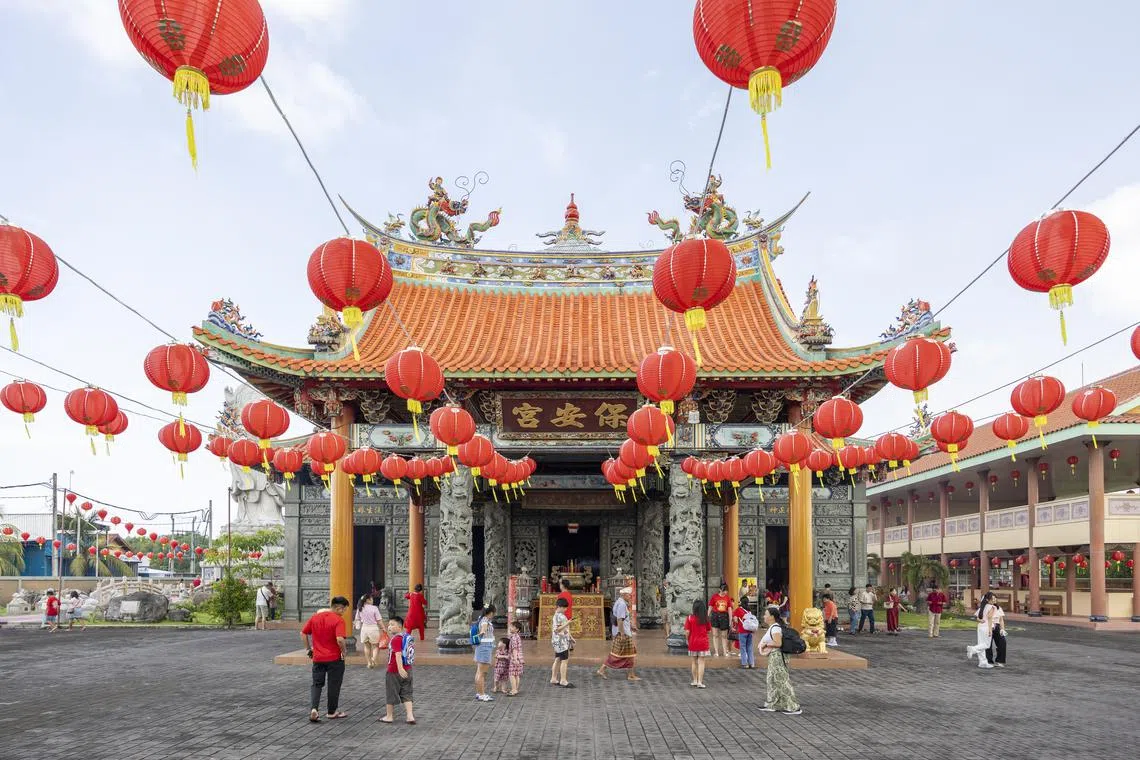
People attend a prayer during Chinese Lunar New Year celebrations at a temple in Denpasar, Bali, on Jan 29.
PHOTO: EPA-EFE
Follow topic:
BEIJING - From incense offerings and lion dances in Beijing to prayer rituals at temples in Bangkok and Taipei, hundreds of millions of people across Asia celebrated Lunar New Year on Jan 29, ushering in the Year of the Snake.
In China, people enjoy eight consecutive public holidays for the 2025 Spring Festival, an opportunity to share meals, attend traditional performances and set off fireworks.
Train stations and airports across the country have been jam-packed with people for weeks as millions returned home to spend the holidays with their loved ones in an annual migration that is expected to be a record.
Temples and parks in the Chinese capital on Jan 29 were full of people braving freezing temperatures to bid farewell to the Year of the Dragon with dances and prayers.
High streets, shopping malls, offices and homes were bedecked in festive red banners – believed to ward off evil – throughout many parts of East and South-east Asia, including South Korea, Singapore and Thailand.
In Taiwan on the morning of Jan 29, people of all ages poured into temples to make offerings of their own, including fruit, sweets, crackers and nuts.
“Our tradition is to visit the temple and pray, for better fortune for this year,” said Ms Chen Ching-yuan, 36, as she visited Longshan Temple in Taipei with her mother.
“There’s no need to ask for anything specific, just wish for a smooth, peaceful, safe and healthy year, and pray that everything goes well.”
Some temple-goers ushered in the new year by racing to be the first to light incense in the pursuit of good fortune.
“I didn’t want to look back with regret when I’m old, so I decided to go for it,” temple-goer Kao Meng-shun said from Fusing Temple in central-west Yunlin County.
In Thailand, throngs of locals and tourists made their way to Wat Mangkon Kamalawat, Bangkok’s most revered Chinese temple.
Built in 1871 by immigrants from southern China, the temple remains a key worshipping site for the Thai-Chinese community.
“I have many Thai-Chinese friends who say this temple is very sacred,” said Ms Sasakorn Udomrat, 56, who has visited the temple for the last eight years and prayed for good health.
Crowds filled the streets in the Philippine and Indonesian capitals for lion dance parades.
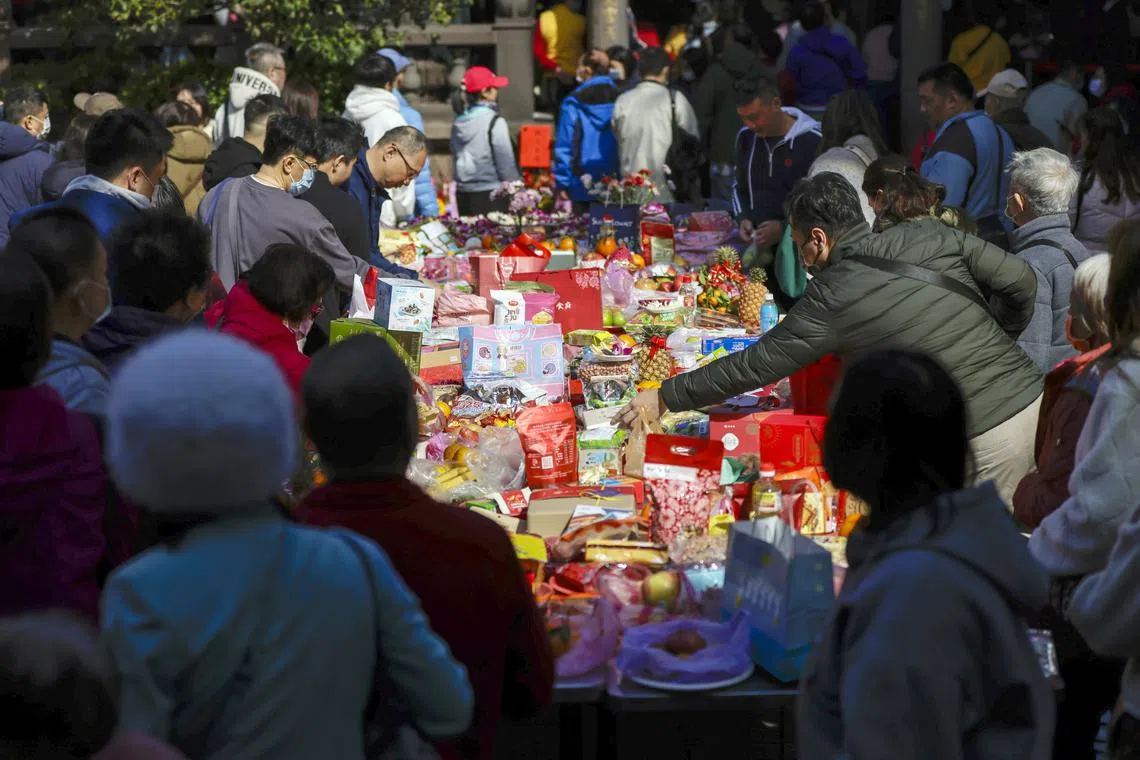
People pray and offer food inside a temple during the celebration of the Chinese Lunar New Year in Taipei, Taiwan, on Jan 29.
PHOTO: EPA-EFE
Snow slows travel
During the traditional 40-day period that runs before, during and after the Chinese New Year holidays in China, about nine billion interprovincial passenger trips on all forms of transport are expected to be made.
Train and air travel are expected to “hit record highs” during the migration in 2025, state news agency Xinhua said.
In South Korea, heavy snowfall caused disruption to train, plane and bus schedules nationwide, as people visited their families this week.
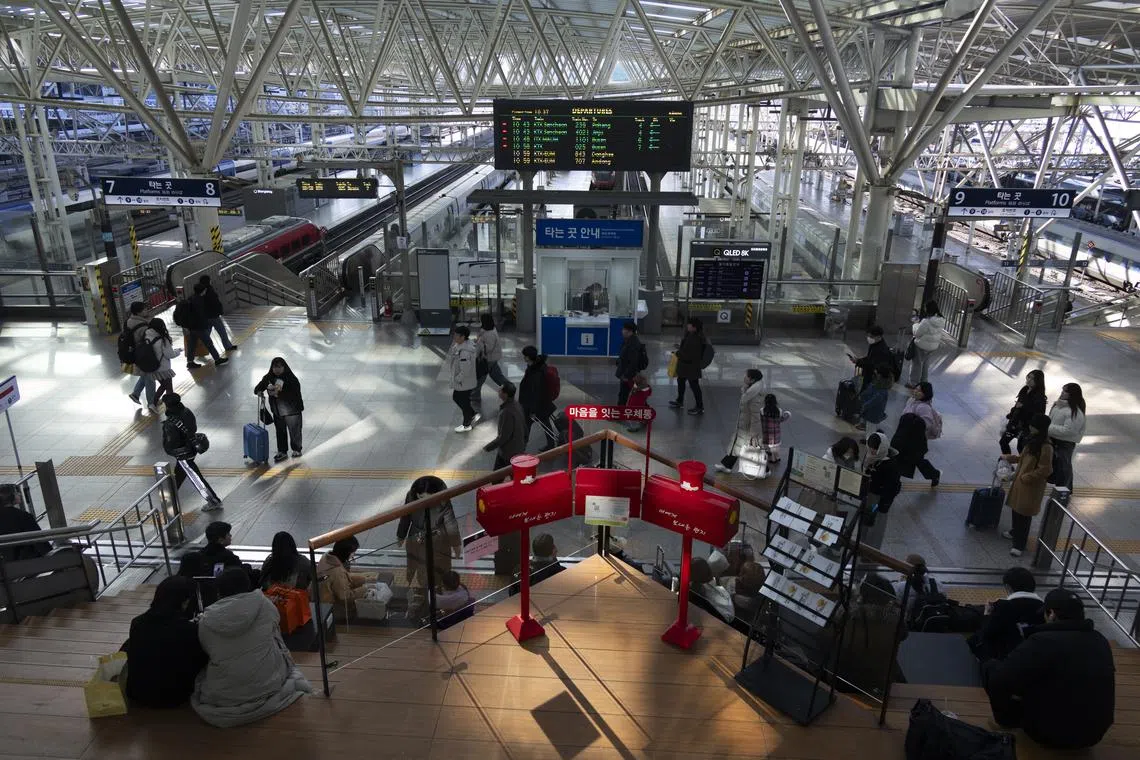
People gather at Seoul station to return to their hometowns in preparation for the traditional Korean holiday of Lunar New Year in Seoul, South Korea, on Jan 25.
PHOTO: EPA-EFE
Passengers were seen at Seoul’s main train station carrying gifts and luggage.
Images released by local media showed vehicles covered in snow stuck on South Korea’s major highways as heavy winds and snowfall persisted.
The traffic authorities warned it could take more than seven hours on Jan 28 to drive from Seoul to the country’s port city of Busan, a journey that typically takes around four hours.
Many others opted to spend the break abroad. The operator of Incheon International Airport announced that it expected more than 2.1 million overseas-bound passengers from Jan 24 to Feb 2.
“This is projected to be the highest average daily passenger count during the Lunar New Year holiday since the airport opened (in 2001),” the operator said in a statement.
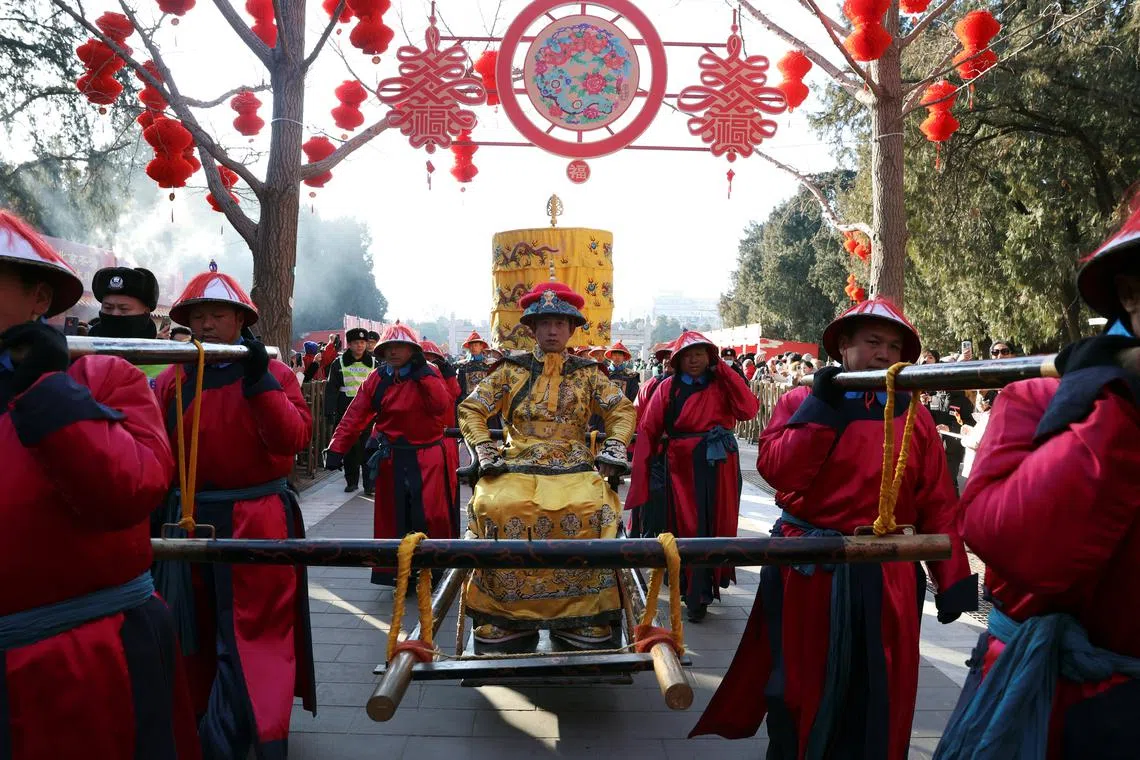
A performer dressed as an emperor sits in a sedan chair during a reenactment of a royal ceremony from the Qing Dynasty, on the first day of the Lunar New Year at the Temple of Earth in Beijing, China, on Jan 29.
PHOTO: REUTERS
The festivities even extended to space, with Chinese astronauts Cai Xuzhe, Song Lingdong and Wang Haoze sending Chinese New Year’s Eve greetings from the Tiangong space station on Jan 28.
In a video released by the China Manned Space Agency, they could be seen dressed in blue jumpsuits with traditional red cloud patterns, holding two pieces of paper-cutting featuring the Chinese character “fu”, for good luck.
“In the new year, may all your dreams come true,” Ms Wang said, forming a heart shape above her head. AFP
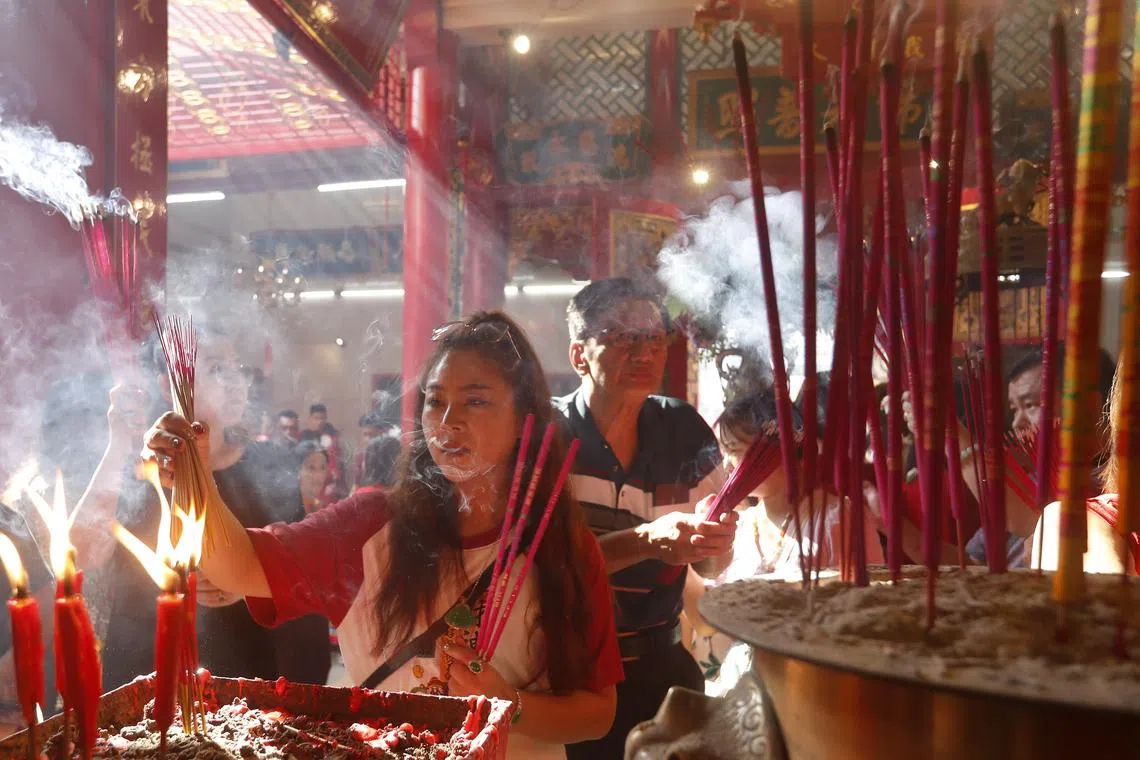
A woman prays inside a Chinese temple in Yangon, Myanmar, on Jan 29.
PHOTO: EPA-EFE

